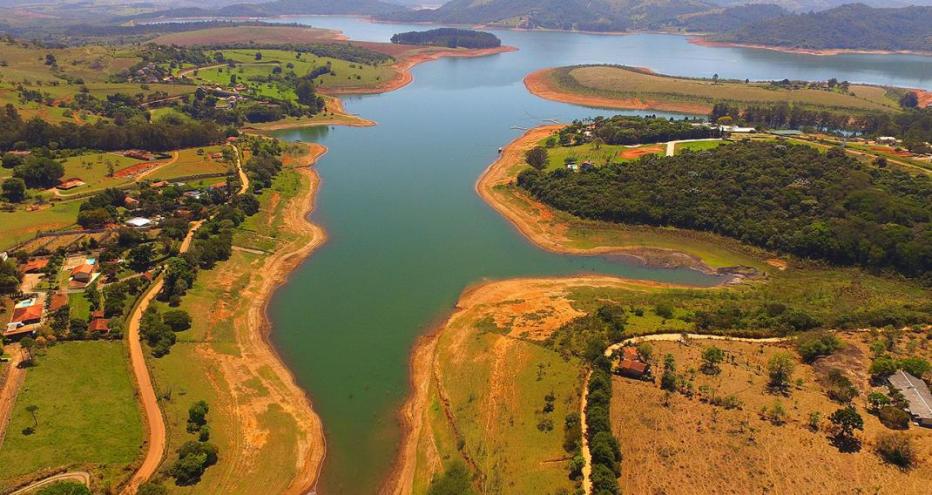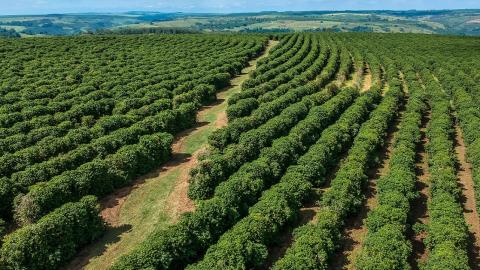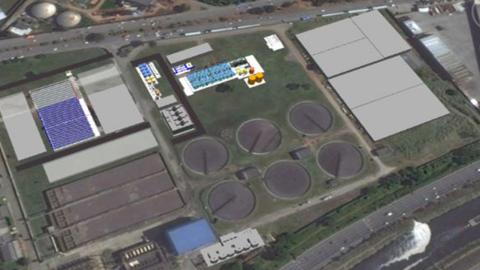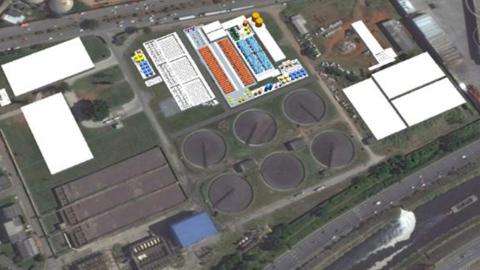



Jacobs. A world where you can.



As climate change threatens water security around the world, more communities are turning to water reuse as a resilient water supply solution and embracing the OneWater principle that all water has value. Jacobs has been supporting clients with water reuse programs for decades, beginning with the first applications of advanced wastewater treatment technologies in the 1960s. We provide our clients with a full range of services, from water reuse feasibility studies to design, construction and operations.



We’ve provided design-build services to the water sector for over 25 years and delivered more than 150 projects. We offer fully integrated design-build and design-build-operate capabilities to tackle the most complex water challenges and work in close collaboration with our clients.



For more than 30 years, Jacobs has been responsible for planning and implementing Lead and Copper Rule-related strategies which protect millions of people in the U.S. and Canada. Our work includes enhanced water quality monitoring strategies, sampling plan development, harvested pipe-scale analysis, lead service line inventories and replacement plans, corrosion control studies and the incorporation of equity and environmental justice considerations into compliance programs.



A curated selection of some of the top-listened to and trending podcast episodes from our popular If/When podcast series.



As a purpose-led company, we know we have a pivotal role to play in addressing the climate emergency. We consider this not only good business, but our duty to channel our technology-enabled expertise and capabilities toward benefitting people and the planet.



We work in partnership, delivering some of the most challenging, diverse and innovative projects and programs globally across multiple sectors. We integrate complex interfaces across planning, procurement and delivery to help unlock better social, environmental and economic outcomes from mega and giga projects.



As our clients navigate the digital transformation and growing cyber risks, we have positioned ourselves at the forefront of this growth, adding digital capabilities, products and tools to serve a growing set of customers.



Sit down with our visionary team of thinkers, dreamers and doers to see what a day in the life is like.



Together with our visionary partner, PA Consulting, we're establishing our position in high end advisory services, creating a springboard to expand in high value offerings beyond the core.


At Jacobs, we're challenging today to reinvent tomorrow by solving the world's most critical problems for thriving cities, resilient environments, mission-critical outcomes, operational advancement, scientific discovery and cutting-edge manufacturing, turning abstract ideas into realities that transform the world for good. With approximately $16 billion in annual revenue and a talent force of more than 60,000, Jacobs provides a full spectrum of professional services including consulting, technical, scientific and project delivery for the government and private sector.



The only certainty about the future is uncertainty. Resilience is an attribute of a smarter planet, and requires planning and adapting ahead of potential threats. We help our clients survive, recover, adapt and thrive.



Jacobs is working to help clients across the United States secure federal funding for projects that make our cities and communities more connected and sustainable. Working hand-in-hand with clients from coast to coast and everywhere in between, Jacobs develops bold, innovative solutions to address the nation’s toughest challenges.



Now more than ever, we appreciate the hard work, sacrifice and dedication of the medical profession in ensuring the health and safety of our communities.



Together, we are stronger. Together, we can transform the future.



Stories that capture our partnerships and innovative impact for a more connected, sustainable world



Whether you’re a year-round iced coffee devotee, can’t roll without cream and sugar or count down the days until Starbucks’ Pumpkin Spice Lattes annual arrival – there’s no doubt coffee is loved worldwide. After all, we went through about 161 million 60-kilogram bags of it worldwide in 2018.
According to a Reuters survey, Americans are drinking more coffee than ever. A survey from the Centre for Economics and Business Research found Brits drinking 25 million more cups per day than they were a decade ago. In Australia, one researcher highlighted how more Aussies are bonding over daily flat whites than craft beer.
Commercial coffee is produced by a small number of plants grown in just a few places around the world, and in 2014 and 2015, when the worst drought in a century plagued Brazil – one of the top global coffee producers – costs skyrocketed and rumors about running out of joe began to swirl.
As our global climate faces future uncertainty, the world’s coffee producers (and lovers!) could face even greater challenges – and in Brazil, coffee production is just one of its drought-influenced issues. São Paulo, one of Brazil’s largest cities, almost completely ran out of water during the 2014/15 drought.
But what if we showed you how Jacobs-designed digital twins solutions and software converged to help São Paulo explore options – in 3D – for a more resilient, drought-proof and secure future supply of another world-beloved beverage, water?
process models within the Replica Parametric Design tool, enabling its use on water and wastewater projects worldwide
water treatment and conveyance projects on 6 continents during 20+ years
Around the world, communities like São Paulo are working to sustainably manage water resources for a variety of needs. With population growth, aging infrastructure and climate risk, the management of water resources is becoming more complex. These complexities present challenges for municipalities and industries to manage water in a sustainable and economical way.
These challenges are exactly why Jacobs developed Replica, our suite of digital twins solutions software, which is comprised of several tools. One of these unique tools is Replica Parametric Design software, which generates conceptual-level designs and cost estimates for municipal and industrial water and wastewater projects that facilitate sustainable and economical decision-making early in the project. By integrating the three main conceptual components of early project planning (facility design criteria and footprints, construction cost estimates and life cycle cost estimates) the tool provides a quicker and clearer picture of project scope and cost than traditional conceptual estimating techniques. From proposals to preliminary design, the tool streamlines the design development of concepts and facilitates making informed, defensible decisions that enable project advancement.



Rainfall in late 2015 finally delivered relief to Brazil, bringing water levels in São Paulo’s largest reservoir, Cantareira, above pump level for the first time in more than a year and a half. Cantareira provides drinking water for nearly six million people – and the situation during the drought had become dire. Before relief came during its lowest point, the city had a scary-low 20 days of water supply left. As climate variability and urbanization change the landscape in Brazil, experts warn droughts and other extreme weather will only worsen in the future.
Exploring options to supplement its future potable water supplies, SABESP, the largest supplier of water and wastewater services in São Paulo, brought Jacobs in for a conceptual planning workshop for a direct potable reuse project.
Direct potable reuse is when highly purified recycled water is directly introduced into a public water system’s drinking water or raw water supply. Since there is no new water on Earth, all water goes through a natural cycle and is essentially recycled water before it is treated and returned to homes and businesses as drinking water. In recent decades though, forward-thinking organizations such as SABESP have looked to replicate nature more closely and on a more rapid scale, reclaiming water once viewed as waste and recycling it to augment water supplies.
During the workshop, SABESP used several Jacobs tools, including Replica Parametric Design, Replica Process™ and Replica Preview™ to explore the possibility of water reuse in the city. Plans for a reuse facility included coarse and fine screens, bioreactor, membrane bioreactor (MBR), reverse osmosis, ultraviolet disinfection and ultraviolet advanced oxidation processes, storage and finished water pumping to the potable distribution system. Our team developed a Replica Process model for the MBR portion of the facility, including fine screens, bioreactor and MBR. We then input information from this model into CPES and used that tool to develop models for the remaining unit processes. Then, using facility layouts and dimensions developed in Replica Parametric Design, we generated a 3D Replica Preview model and created a video of the 3D model to visualize the proposed layout.
Our Replica Preview tool uses algorithms to leverage the design parameters from the Replica Parametric Design files to automatically create accurate 3D renderings in the SketchUp software environment. These files can then be geo-located in Google Earth™ allowing project stakeholders to see what the future facility will look like.
São Paulo has an exciting opportunity to reclaim its water future and with Jacobs’ suite of parametric design tools, we enabled the development of a facility approach that could meet current and future needs with direct potable reuse and work within site constraints. One of SABESP’s wastewater technology managers even noted, “We have never seen such innovation, detailed planning and information developed in such a short time scale by any consultant.”
With more than 120 process models, Replica Parametric Design can be used on nearly all water and wastewater projects worldwide for conceptual design, cost estimating and technology comparison. The software utilizes parametric engineering algorithms based on the successful implementation of previous projects to provide detailed and accurate scope, cost estimates and 3D visualizations for projects early in their lifespans.
Compared with traditional conceptual estimating techniques, our software yields a much quicker and clearer picture of the project’s unique scope and provides a Class 4 cost estimate to inform technical decision-making before investing in further detailed design. For each model, the tool outputs a 3D visualization of the facility layout based on general arrangement drawings derived from previous projects – supporting early stakeholder understanding and civil site layout.
Replica Parametric Design also produces lifecycle costs, energy usage and an environmental impact summary, which includes items like greenhouse gas emissions and truck traffic, for each project. The environmental impact summary is based on key construction quantities (e.g. concrete, steel, earthwork, etc.) as well as facility power, chemical and residuals consumption and/or generation. Early estimates of environmental impacts help to inform more sustainable water management decision‑making. We’ve used the software on a wide range of projects, from an aquifer replenishment system for a community rapidly diminishing its groundwater supply to a first-of-its-kind water treatment system in southwest Florida that blends three water sources together using the latest, large-scale treatment technologies.